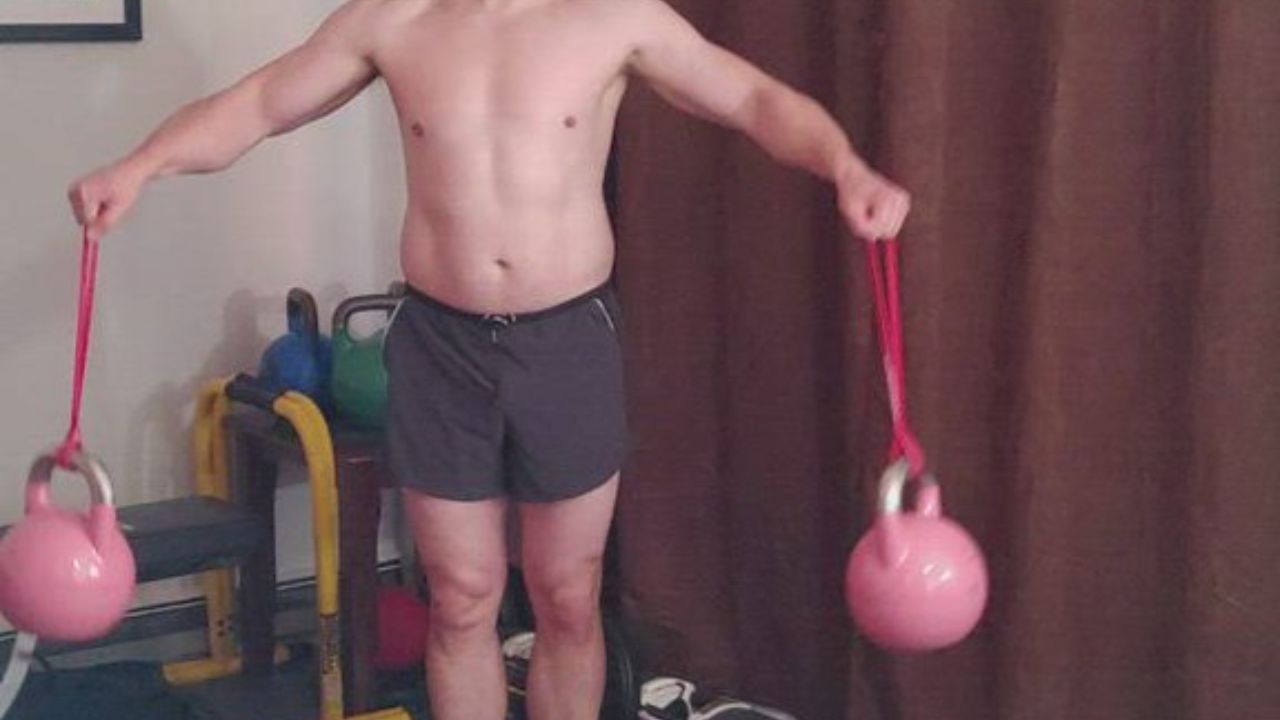
In this article, we will explore 11 essential at-home physical therapy techniques for optimal recovery. These evidence-based techniques are designed to improve flexibility, strengthen muscles, enhance balance, and promote overall stability.
From stretching exercises to joint mobilization techniques, we will delve into various methods that can aid in range of motion improvement and muscle control.
Additionally, we will discuss the benefits of foam rolling, neuromuscular re-education, proprioceptive training, therapeutic taping, and self-massage for relaxation and pain relief.
Stretching Exercises for Improved Flexibility
In order to achieve improved flexibility, individuals can incorporate stretching exercises into their daily routine, as these exercises have been shown to increase joint range of motion and prevent muscle stiffness. Stretching is a crucial component of any exercise or physical therapy program, as it helps to lengthen muscles and improve overall mobility.
By regularly engaging in stretching exercises, individuals can enhance their muscle flexibility, allowing them to move more freely and comfortably. Additionally, stretching promotes blood flow to the muscles, which aids in their recovery and prevents the buildup of lactic acid.
To further enhance flexibility, individuals can also consider incorporating strengthening and stability exercises into their routine. These exercises help to build strength in the muscles surrounding the joints, providing support and stability.
Furthermore, myofascial release techniques, such as foam rolling, can be beneficial in reducing muscle tension and improving flexibility.

Strengthening Exercises for Muscle Rehabilitation
To facilitate muscle rehabilitation, incorporating strengthening exercises alongside physical therapy can be highly effective and beneficial. Strengthening exercises not only help in rebuilding muscle strength and function after an injury but also play a crucial role in injury prevention and muscle growth.
Here are four key benefits of incorporating strengthening exercises into a rehabilitation program:
Injury prevention: Strengthening exercises focus on improving muscular strength and stability, reducing the risk of future injuries. By strengthening the muscles surrounding a joint, the load on the joint is distributed more evenly, decreasing the chance of injury.
Enhanced muscle growth: Resistance training, a form of strengthening exercise, promotes muscle growth by stimulating the muscles to adapt and grow in response to increased load or resistance. This can aid in rebuilding muscle mass and improving overall muscle function.
Improved functional abilities: Strengthening exercises target specific muscle groups, helping to restore and improve functional abilities. This can include activities such as walking, climbing stairs, or lifting objects.
Increased overall strength and endurance: Regular strengthening exercises can lead to an overall increase in strength and endurance, allowing individuals to perform daily activities more easily and with less fatigue.
Incorporating strengthening exercises into a rehabilitation program can have significant benefits for muscle rehabilitation, injury prevention, and muscle growth.

Balance and Coordination Exercises for Stability
Balance and coordination exercises are essential for improving stability and reducing the risk of falls in individuals undergoing physical therapy. These exercises focus on enhancing proprioception, which is the body's ability to sense its position in space. By incorporating balance training and stability exercises into a physical therapy regimen, patients can develop better control over their movements and reduce the likelihood of falls and injuries.
Balance exercises can include standing on one leg, walking on uneven surfaces, or using stability balls or balance boards. Additionally, coordination exercises such as marching in place, cross-body movements, and reaching exercises can help improve overall body control and coordination.
It is important for physical therapists to tailor these exercises to each individual's needs and abilities, ensuring a safe and effective recovery process.
Foam Rolling Techniques for Myofascial Release
Foam rolling is a popular technique used for myofascial release, which can help improve mobility and alleviate muscle tightness. By applying pressure to specific areas of the body using a foam roller, you can stimulate blood flow and break up adhesions in the fascia, the connective tissue surrounding the muscles.
Proper foam rolling technique involves slowly rolling over the targeted muscle group, focusing on areas of tension or discomfort, and using your body weight to apply the desired amount of pressure.
Benefits of Foam Rolling
The article highlights the various benefits of utilizing a foam roller for myofascial release techniques. Foam rolling has gained popularity in recent years as a self-massage tool that promotes recovery and enhances athletic performance. Here are four key benefits of foam rolling:
- Improved flexibility and range of motion: Foam rolling helps release tight muscles and fascia, increasing flexibility and improving joint mobility.
- Enhanced muscle recovery: By applying pressure to targeted areas, foam rolling stimulates blood flow, which helps remove metabolic waste and promotes muscle recovery.
- Injury prevention: Regular foam rolling can help prevent injuries by reducing muscle imbalances, enhancing muscle coordination, and improving overall muscle function.
- Pain relief: Foam rolling can provide temporary relief from muscle soreness and tightness, reducing pain and discomfort.
Incorporating foam rolling into your recovery routine can have significant benefits for overall physical well-being and performance.

Proper Foam Rolling Technique
Two key components of proper foam rolling technique are consistency and control, as they ensure effective myofascial release and prevent injury. Foam rolling has gained popularity due to its numerous benefits, such as improving flexibility, reducing muscle soreness, and increasing range of motion. To achieve these benefits, it is crucial to adopt correct foam rolling techniques.
Consistency refers to regularly incorporating foam rolling into your exercise routine. By committing to foam rolling exercises on a consistent basis, you can maximize its benefits and promote muscle recovery. Control is equally important as it involves maintaining proper form and applying the right amount of pressure during foam rolling. This ensures that you target the correct muscles and avoid excessive strain or injury.
To use foam rolling techniques effectively, start by selecting the appropriate foam roller density for your needs and goals. Begin with gentle pressure and gradually increase the intensity as your muscles adapt. Focus on specific areas of tension or tightness, using slow and controlled movements to roll back and forth over the targeted muscle group. Remember to breathe deeply and relax into the foam roller to enhance the release of tension.
Joint Mobilization Techniques for Improved Range of Motion
Joint mobilization techniques are effective in improving range of motion by targeting specific joints and tissues. These techniques involve skilled manual therapy interventions that aim to restore normal joint mechanics, reduce pain, and enhance overall function.
Technique Effectiveness Explained
Significantly, utilizing mobilization techniques in physical therapy can effectively enhance range of motion for improved patient recovery. Technique evaluation and effectiveness assessment play a crucial role in determining the success of these techniques. It is important for physical therapists to carefully assess and evaluate the effectiveness of different mobilization techniques to ensure optimal outcomes for their patients.
Here are four key points to consider when evaluating the effectiveness of mobilization techniques in physical therapy:
Patient feedback: Obtaining feedback from patients regarding their experience and the impact of the technique on their range of motion can provide valuable insights into its effectiveness.

Objective measurements: Using standardized and validated measures, such as goniometry or motion analysis, can provide quantitative data on the improvement in range of motion achieved through the technique.
Comparison with baseline data: Comparing the patient's range of motion before and after implementing the technique can help determine its effectiveness in enhancing mobility.
Research evidence: Reviewing scientific literature and research studies on the technique can provide evidence-based information on its effectiveness and efficacy.
Joint Mobilization Benefits
Furthermore, understanding the benefits of joint mobilization can assist physical therapists in optimizing their treatment plans for patients seeking improved range of motion.
Joint mobilization involves skilled manual techniques that aim to restore joint mobility, reduce pain, and improve overall joint health.
By applying gentle, controlled movements to the affected joint, physical therapists can alleviate joint stiffness and increase joint flexibility. This technique is particularly beneficial for individuals experiencing joint pain, as it helps to relieve discomfort and improve joint function.
Joint mobilization also plays a crucial role in promoting joint health by stimulating blood flow, enhancing nutrient delivery, and reducing inflammation.

It is important for physical therapists to incorporate joint mobilization techniques into their treatment plans to ensure optimal recovery and long-term joint health for their patients.
Enhancing Range of Motion
To achieve optimal recovery and improve range of motion, physical therapists can implement joint mobilization techniques while focusing on enhancing muscle flexibility. Joint mobilization involves the skilled application of gentle, oscillatory movements to the joints to restore their normal mobility, reduce pain, and improve function.
Alongside joint mobilization, physical therapists can incorporate various stretching techniques to further enhance range of motion and flexibility. These may include static stretching, dynamic stretching, proprioceptive neuromuscular facilitation (PNF) stretching, and active isolated stretching. Each of these techniques targets different muscle groups and can be tailored to an individual's specific needs and goals.
Additionally, joint manipulation, another technique used by physical therapists, involves the application of controlled, sudden force to a joint to improve its range of motion and alleviate pain. These techniques, when performed under the guidance of a trained professional, can play a crucial role in optimizing recovery and improving overall function.
Posture Correction Exercises for Proper Alignment
One of the key recommendations for improving posture alignment is incorporating regular stretching exercises into your daily routine. Good posture is important for maintaining balance and preventing musculoskeletal issues.
Stretching exercises help to lengthen tight muscles, improve flexibility, and promote proper alignment of the spine. By incorporating these exercises into your daily routine, you can gradually improve your posture and reduce the risk of developing back pain, neck pain, and other postural problems.
In addition to stretching, balance training can also be beneficial for improving posture. Balance exercises help to strengthen the core muscles, improve stability, and enhance proprioception, which is the body's ability to sense its position in space.

Cardiovascular Exercises for Overall Fitness
Cardiovascular exercises are crucial for enhancing overall fitness and promoting heart health. Engaging in regular aerobic activities such as jogging, cycling, or swimming can help boost cardiovascular endurance, improve blood circulation, and increase lung capacity.
These exercises not only contribute to weight management but also reduce the risk of chronic conditions such as heart disease, diabetes, and high blood pressure.
Heart-Healthy Home Workouts
Implementing dynamic bodyweight exercises into your daily routine can significantly improve heart health and overall fitness. These exercises require no equipment and can be easily performed at home, making them accessible to everyone.
Here are four heart-healthy bodyweight exercises to incorporate into your workout regimen:
Jumping jacks: This exercise gets your heart rate up, improves cardiovascular endurance, and engages multiple muscle groups.
Burpees: A full-body exercise that combines strength training and cardiovascular conditioning, burpees are highly effective in improving heart health.
High knees: By lifting your knees as high as possible while jogging in place, you can increase your heart rate and stimulate blood flow to the lower body.

Mountain climbers: This exercise targets the core, arms, and legs while providing cardiovascular benefits.
Boosting Cardiovascular Endurance
To achieve optimal cardiovascular endurance, it is important to consistently engage in a variety of high-intensity exercises such as interval training or circuit training. These types of exercises have been shown to provide numerous cardiovascular endurance benefits and are effective in improving stamina.
Interval training involves alternating between periods of high-intensity exercise and periods of rest or lower intensity. This type of training helps to improve the efficiency and capacity of the cardiovascular system, leading to increased stamina and endurance.
Circuit training, on the other hand, involves performing a series of exercises targeting different muscle groups with minimal rest in between. This type of training not only improves cardiovascular endurance but also helps to build strength and muscular endurance.
Incorporating these high-intensity exercises into your fitness routine can lead to significant improvements in cardiovascular endurance and overall fitness level. So, if you're looking to boost your stamina and endurance, consider incorporating interval training or circuit training into your workout regimen.
Neuromuscular Re-Education Techniques for Muscle Control
One effective approach in physical therapy is incorporating neuromuscular re-education techniques for enhancing muscle control and promoting optimal recovery. These techniques involve a variety of exercises and interventions that aim to retrain the neuromuscular system, improve coordination, restore normal movement patterns, and reduce muscle imbalances.
Some benefits of neuromuscular re-education include:

- Improved muscle coordination and control: Through specific exercises that target muscle activation and timing, patients can regain control over their movements, leading to improved functional abilities.
- Enhanced proprioception: Neuromuscular re-education helps individuals develop a better sense of body position and movement, which is crucial for balance and stability.
- Injury prevention: By addressing muscle imbalances and improving muscle control, neuromuscular re-education can help reduce the risk of future injuries.
- Faster recovery: Incorporating these techniques into physical therapy sessions can expedite recovery by facilitating the retraining of the neuromuscular system.
Overall, neuromuscular re-education techniques play a vital role in physical therapy, providing numerous benefits for individuals seeking to regain muscle control and optimize their recovery process.
Proprioceptive Training for Body Awareness
During physical therapy sessions, incorporating proprioceptive training alongside neuromuscular re-education techniques can further enhance body awareness and promote optimal recovery.
Proprioceptive training focuses on improving the body's ability to sense and control its position in space, which is crucial for maintaining proper body alignment and preventing injuries. By challenging the body's proprioceptive system through exercises such as balance training and joint stabilization exercises, individuals can improve their body awareness and reduce the risk of re-injury.
Additionally, proprioceptive training can help improve muscle coordination and control, leading to better overall movement patterns and functional abilities. Physical therapists often incorporate specific body alignment techniques and injury prevention strategies into proprioceptive training programs to maximize the benefits and ensure a safe and effective recovery process.
Therapeutic Taping Techniques for Support and Pain Relief
The use of therapeutic taping techniques, such as applying kinesiology tape to affected areas, can provide targeted support and pain relief for individuals undergoing physical therapy. Therapeutic taping is a widely utilized technique that aims to enhance the body's natural healing process and promote optimal recovery.
Here are some key benefits of therapeutic taping techniques:
Improved stability: Taping can provide additional support to weak or injured muscles and joints, helping to stabilize them during movement and reduce the risk of further injury.

Pain relief: By applying tape to the affected area, therapeutic taping can help alleviate pain by providing compression and support, reducing inflammation, and increasing blood flow.
Enhanced proprioception: Taping techniques can improve proprioception, which is the body's awareness of its position in space. This can help individuals regain balance and coordination after an injury or surgery.
Self-massage techniques: Therapeutic taping can also be combined with self-massage techniques to further enhance pain relief and promote relaxation of tense muscles.
Self-Massage Techniques for Muscle Relaxation and Tension Relief
Several effective self-massage techniques can be utilized for muscle relaxation and tension relief, including kneading, rolling, and applying pressure to specific trigger points. These techniques can be easily performed at home and can help individuals experience the benefits of massage therapy without the need for a professional masseuse.
To enhance the effectiveness of self-massage, individuals can also incorporate massage tools such as foam rollers, massage balls, or handheld massagers. These tools can provide deeper pressure and target specific areas of tension or tightness.
Deep tissue massage techniques can also be incorporated into self-massage routines to address deeper layers of muscle tension and promote overall relaxation.
It is important to approach self-massage with caution, starting with lighter pressure and gradually increasing as tolerated. Individuals should also consult with a healthcare professional if they have any underlying medical conditions or injuries that may be affected by self-massage.

Frequently Asked Questions
Are There Any Specific Stretching Exercises That Can Help With Lower Back Pain?
Stretching exercises can be beneficial for lower back pain relief. Specific techniques, such as hamstring stretches, cat-camel stretches, and knee-to-chest stretches, can help improve flexibility, reduce muscle tension, and alleviate discomfort in the lower back.
How Often Should I Be Doing Strengthening Exercises for Optimal Muscle Rehabilitation?
To achieve optimal muscle rehabilitation, it is important to perform strengthening exercises regularly. The frequency of these exercises will depend on factors such as your specific condition and the guidance of your physical therapist. Additionally, incorporating myofascial release techniques can further enhance recovery.
Can Balance and Coordination Exercises Help With Vertigo or Dizziness?
Balance and coordination exercises can be beneficial for individuals experiencing vertigo or dizziness. Physical therapy techniques, such as vestibular rehabilitation, can help improve balance and reduce symptoms through targeted exercises and interventions.
What Is the Recommended Frequency for Foam Rolling Techniques for Myofascial Release?
Foam rolling techniques can be beneficial for myofascial release. The recommended frequency for foam rolling varies depending on individual needs and goals. It is best to consult with a physical therapist for personalized guidance.
Are There Any Specific Cardiovascular Exercises That Are Safe for Individuals With Knee Injuries?
Safe and low impact cardiovascular exercises for individuals with knee injuries include swimming, cycling, and using an elliptical machine. Effective stretching exercises for hip flexibility may include hip flexor stretches and piriformis stretches.
Conclusion
In conclusion, incorporating at-home physical therapy techniques can be essential for optimal recovery.
Stretching exercises improve flexibility, strengthening exercises aid in muscle rehabilitation, and balance and coordination exercises enhance stability.

Foam rolling techniques provide myofascial release, while joint mobilization techniques improve range of motion.
Neuromuscular re-education techniques promote muscle control, proprioceptive training enhances body awareness, and therapeutic taping techniques offer support and pain relief.
Self-massage techniques can also aid in muscle relaxation and tension relief.
These evidence-based techniques can greatly contribute to a successful recovery process.
 Mobility trainingHome Fitness RecoverySports Injury PreventionPersonal Physical TherapyOrthopedic SolutionsPrivacy PolicyTerms And Conditions
Mobility trainingHome Fitness RecoverySports Injury PreventionPersonal Physical TherapyOrthopedic SolutionsPrivacy PolicyTerms And Conditions
